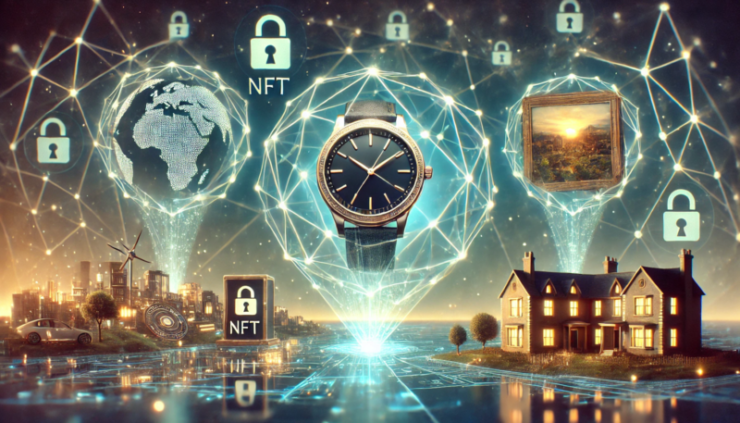The concept of ownership has long been associated with physical proof—deeds, receipts, and certificates issued by trusted institutions. But in an increasingly digital world, these traditional forms of verification are being challenged. Enter non-fungible tokens (NFTs), blockchain-powered digital certificates that are redefining how ownership is confirmed and transferred for both digital and physical assets.
Unlike cryptocurrencies, where each unit is interchangeable, NFTs are unique and irreplaceable. Their blockchain-backed design ensures that every transaction is recorded transparently and permanently, reducing the risks of fraud and counterfeiting. As industries explore new ways to authenticate valuable assets, NFTs are emerging as a crucial tool in ownership verification.
How NFTs Authenticate Physical Assets
As Kevin O’Leary notes, not all NFTs are created equal. Some of these NFT projects are only backed by hype and nothing else behind them. However, physical attachment linked to NFTs offers a huge advantage.
NFTs serve as digital proof of authenticity for physical items, linking them to a blockchain record that cannot be altered. This is achieved through technologies such as QR codes, NFC chips, or RFID tags embedded in the asset. These identifiers connect the real-world object to its digital certificate, creating an immutable record of ownership and provenance.
Luxury brands and art markets are already adopting NFT-based verification systems to combat counterfeiting. A high-end watch, for example, can be paired with an NFT containing its serial number and purchase history. When resold, the NFT is transferred to the new owner, confirming its authenticity. Similarly, the real estate sector is exploring tokenization, where an NFT represents property ownership, streamlining transfers and reducing reliance on intermediaries.
Automotive and high-value asset industries are also leveraging NFTs for transparent ownership tracking. Manufacturers can issue digital titles stored on the blockchain, ensuring an unalterable record of ownership transfers, accident history, and maintenance records. These innovations provide buyers with confidence, knowing the history of their purchases is verifiable and secure.
Challenges and the Road Ahead
While the advantages of NFTs in ownership verification are clear, widespread adoption faces challenges. Legal recognition of NFT-based proof of ownership remains inconsistent across jurisdictions, leaving uncertainty about their enforceability in disputes. Additionally, securely linking NFTs to physical items requires robust technology to prevent tampering or detachment from their digital counterparts.
Adoption barriers also persist, as many industries and consumers remain unfamiliar with NFT technology. Education and industry-wide standards will be essential for integrating NFTs into mainstream ownership verification practices.
Despite these challenges, the potential of NFTs in revolutionizing ownership documentation is undeniable. As blockchain technology advances and regulatory frameworks adapt, NFTs may become a widely accepted method of proving ownership, reshaping industries from luxury goods to real estate. In a world where authenticity and provenance are increasingly scrutinized, NFTs offer a compelling solution for securing ownership in both the physical and digital realms.





